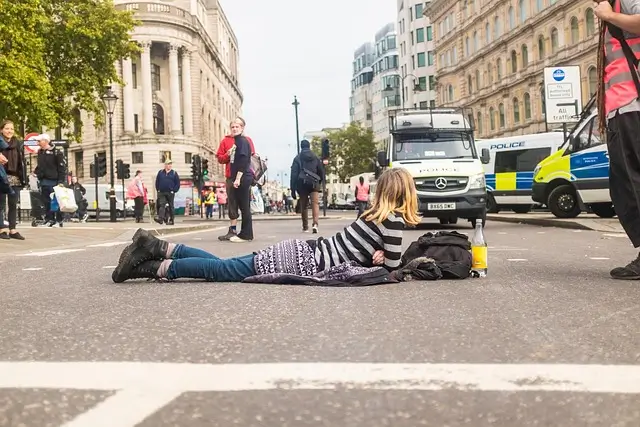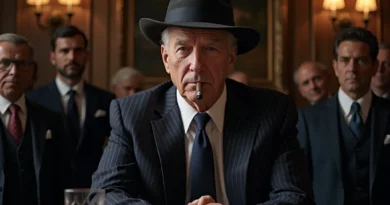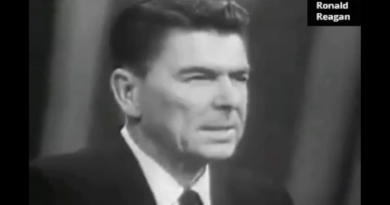Democrat Protests Endanger Public Safety
The Dangers of Blocking Traffic: A Call for Accountability and Safer Protest Practices
Democrat Protests Endanger Public Safety. In recent years, the incidents of democrat protest actions where demonstrators take to blocking roads and even racetracks during high-profile events. While protests serve as an important vehicle for expressing dissent and drawing attention to issues, the deliberate obstruction of traffic presents significant dangers to both the protestors themselves and to innocent members of the public.
Lets look at the different risks posed by such actions, the potential economic repercussions for communities, and why it is high time for laws to be enacted that treat the intentional obstruction of roadways as a serious crime. Moreover, we delve into historical precedents where public obstruction was curtailed by law, illustrating that society has long recognized the need to balance free expression with public safety and order.
I. The Dual-Edged Sword of Protest: Rights and Responsibilities
Democrat Protests Endanger Public Safety. Protest is a fundamental right in democratic societies. It serves as a tool for marginalized voices and a check on power structures. However, the methods by which these demonstrations are carried out can sometimes tip the balance from peaceful assembly to public endangerment. When demonstrators choose to block roadways or racetracks, they not only interfere with the normal functioning of daily life but also expose themselves and others to unforeseen hazards.
The concept of protest, particularly among leftist groups, often emphasizes solidarity with the common people and a challenge to established power structures. Yet, when the tactic shifts from symbolic demonstration to physical obstruction, the consequences can become dangerously tangible. The question is not whether protest is acceptable—indeed, it is a cornerstone of free expression—but whether certain methods of protest undermine the very communities the demonstrators claim to protect.
II. Immediate Physical Dangers on the Road and Racetrack
A. Risks to Innocent Drivers
When protestors block roads or racetracks, they introduce an element of unpredictability into environments that are designed for controlled and safe vehicular movement. Roads, by design, allow for the predictable flow of traffic, and drivers rely on clear pathways and established traffic signals to make split-second decisions. Introducing unexpected obstacles can lead to severe consequences:
- Sudden Maneuvering: Drivers forced to swerve or brake abruptly may lose control of their vehicles. In high-speed environments such as racetracks or highways, even a split-second decision can result in a catastrophic accident.
- Collision Hazards: The presence of protestors near or on the roadway creates the potential for direct collisions. Whether in urban traffic or on the periphery of a racetrack, vehicles may collide with protestors or other vehicles, resulting in injuries or fatalities.
- Emergency Service Delays: Blocked routes impede the passage of ambulances, fire trucks, and police vehicles, which may be needed urgently during an accident or medical emergency. This delay can be a matter of life and death.
B. Risks to the Protestors Themselves
It is crucial to recognize that those who block traffic are not immune to harm. By positioning themselves in areas with active vehicle movement, protestors expose themselves to significant risk:
- Direct Impact: In situations where vehicles cannot stop in time or swerving leads to miscalculations, protestors are at risk of being hit. The chaotic nature of these confrontations makes it nearly impossible for protestors to avoid all dangers.
- Legal and Physical Retaliation: While the physical risks are apparent, there is also the likelihood of violent clashes with law enforcement. In many cases, interventions by police can escalate quickly, and protestors may find themselves injured not only by vehicles but also during confrontations with security forces.
The environment around racetracks is particularly perilous. Racetracks are engineered for speed, with vehicles reaching extremely high velocities in controlled conditions. A protest that interferes with a race transforms a highly regulated space into one of uncontrolled danger. The presence of protestors can force drivers into making unsafe decisions, and any error in judgment can lead to high-impact collisions.
III. The Economic Impact: Beyond Immediate Physical Harm
Blocking traffic does not only lead to immediate physical dangers—it also has far-reaching economic consequences that ripple through communities.
A. Lost Productivity and Income
- Daily Commutes: When major roads are blocked, thousands of commuters may be delayed or prevented from reaching their workplaces. The ripple effect is significant: lost hours of work translate into lost wages and reduced productivity.
- Impact on Businesses: Local businesses rely on steady customer flows. When roads are obstructed, the economic activity that sustains these enterprises is disrupted. This can lead to temporary closures, layoffs, or even permanent business failures in areas that are hit repeatedly by such disruptions.
B. Disruption of Critical Services
- Emergency Response: The delay in emergency services can have a domino effect on local economies. When response times are increased, the cost—in both human life and economic terms—of delayed medical treatment, firefighting, or law enforcement intervention can be enormous.
- Supply Chain Interruptions: In our interconnected economies, even short-term blockages of transportation routes can disrupt supply chains. Goods may be delayed, leading to increased costs and a potential shortage of essential products.
C. Broader Social Costs
The economic impact extends beyond direct financial losses. There is also a significant social cost when everyday citizens are unable to fulfill their responsibilities, whether that means missing work, delaying essential services, or being forced into hazardous driving conditions. The cumulative effect of these losses can undermine community morale and trust in the ability of public institutions to safeguard everyday life.
IV. The Case for Stricter Laws and Harsher Penalties
Given the array of dangers and the broad economic fallout, there is a compelling argument for lawmakers to take a firmer stance against deliberate traffic obstruction during protest actions. Several key points underscore the need for enhanced legal measures:
A. Public Safety as a Paramount Concern
The fundamental role of government is to ensure the safety and well-being of its citizens. When protest tactics cross the line into endangering public safety, the state has a responsibility to intervene decisively. Legislation that criminalizes the intentional blockage of traffic—especially in contexts where high-speed vehicles are involved—would serve as a deterrent against actions that put lives at risk.
B. Economic Justifications for Stricter Measures
Economic stability is a cornerstone of community health. Legislators must acknowledge that when individuals are prevented from reaching their workplaces, when businesses are forced to close temporarily, or when supply chains are disrupted, the entire community suffers. Laws that impose severe penalties on those who obstruct traffic in ways that lead to economic harm would send a clear message that the costs of such actions far outweigh any perceived political gains.
C. Deterrence Through Legal Reform
Stricter legal measures, such as mandatory fines and imprisonment for willful obstruction of public thoroughfares, could serve as an effective deterrent. Proposed reforms might include:
- Enhanced Fines: Monetary penalties should reflect not only the potential harm caused but also the broader economic impact of the obstruction. Fine structures could be designed to scale with the duration of the blockage and the estimated economic losses incurred.
- Incarceration for Repeat Offenders: For individuals or groups that repeatedly engage in such dangerous activities, mandatory incarceration could be considered. This would underscore the seriousness of the offense.
- Compensatory Damages: In instances where economic losses or injuries are directly attributable to the obstruction, civil liabilities should be clearly outlined. Victims of these actions deserve restitution for lost wages, medical expenses, and emotional distress.
D. A Balanced Approach to Civil Liberties
It is important to stress that these proposed legal reforms are not an attack on the right to protest. Democratic societies thrive on robust debate and the free exchange of ideas. However, the right to protest does not include the right to endanger public safety or inflict significant economic harm. By enforcing laws that target the methods—not the message—of protest, governments can uphold civil liberties while also protecting the welfare of the community.
V. A Historical Perspective: The Evolution of Street Obstruction Laws
Historically, societies have recognized the need to regulate public spaces to ensure safety and order. In many cities around the world, laws against obstructing public roads or “playing in the streets” have long been in place, reflecting a balance between individual freedoms and the collective right to safe, uninterrupted passage.
A. The Origins of Traffic Obstruction Laws
- Urban Growth and Public Safety: As urban centers expanded in the early 20th century, the rise in automobile usage necessitated clear regulations governing traffic. Laws were enacted to prevent individuals from impeding the flow of vehicles, primarily to reduce accidents and ensure that emergency services could operate without hindrance.
- Economic Considerations: In rapidly industrializing cities, any disruption in the flow of traffic was seen as a direct threat to economic stability. Street fairs, parades, and other public gatherings were allowed only under strict regulations to ensure that normal business could continue unhindered. These regulations laid the groundwork for modern laws that treat intentional obstructions as serious offenses.
B. The Decline of Unregulated Public Play
In earlier eras, children and community members often engaged in informal play on the streets. However, as the volume and speed of traffic increased, what was once a benign activity became a significant public safety concern. Municipal governments began to crack down on any form of street obstruction:
- Establishment of “No-Play Zones”: Many cities designated specific areas where public play was forbidden to reduce the risk of accidents. Over time, these regulations expanded into broader laws that criminalized the deliberate obstruction of traffic.
- Legal Precedents: Court cases in the mid-20th century often upheld the government’s right to restrict public access to roadways when it could be shown that such restrictions were necessary to protect public safety. These precedents have since informed contemporary discussions about protest actions that interfere with traffic.
VI. Moving Forward: Proposals for Modern Legal Reform
Given the evolving nature of protest and the increasing complexity of modern transportation networks, it is essential that lawmakers revisit and update existing statutes to reflect current realities. Here are several proposals for modern legal reform:
A. Clear Definitions and Guidelines
Legislation should start by providing clear definitions of what constitutes an “intentional obstruction of traffic.” This includes not only physical blockages on highways and racetracks but also any demonstrative activity that poses an imminent threat to public safety. By delineating the boundaries between lawful protest and criminal activity, the law can help prevent abuses on both sides.
B. Graduated Penalties Based on Context
Not all acts of protest carry the same level of risk. Laws could introduce a graduated penalty system that takes into account factors such as:
- Duration of the Obstruction: A protest that blocks a road for a few minutes may warrant a warning or a minor fine, whereas prolonged blockages should incur harsher penalties.
- Time and Place: Obstructions occurring on busy highways or during high-speed events like racetracks should be met with more severe consequences compared to those in less hazardous settings.
- Intent and Outcome: If an obstruction leads directly to an accident, injury, or significant economic loss, the penalties should be significantly higher. This would incentivize protestors to choose safer venues and tactics.
C. Protection for Innocent Bystanders
Legislation should also ensure that those who suffer economic or physical harm as a result of intentional traffic blockages have a clear legal avenue for recourse. This could involve:
- Establishing a Victim Compensation Fund: Funds could be set aside to compensate individuals who lose income or suffer injuries due to these disruptive protests.
- Streamlined Legal Processes: Victims should be able to pursue claims for damages without being bogged down by protracted legal battles, ensuring that justice is both swift and fair.
D. Coordination Between Law Enforcement and Community Leaders
Effective implementation of these laws requires a cooperative approach between police, local government officials, and community stakeholders. By developing protocols that:
- Designate Safe Protest Zones: Areas that allow for the exercise of free speech without compromising public safety.
- Implement Rapid Response Teams: Specialized units trained to manage and de-escalate situations where protest activities intersect with major transportation routes.
- Enhance Communication: Real-time alerts and coordinated planning between protest organizers and law enforcement can help mitigate risks without infringing on the right to protest.
Democrat Protests Endanger Public Safety
VII. Conclusion
While the right to protest is undeniably a vital aspect of democratic society, the method of doing so matters greatly. Blocking traffic—whether on busy roadways or racetracks—can result in immediate physical dangers, long-term economic disruptions, and potential legal ramifications that affect not only the protestors but also countless innocent individuals. The risks are multifaceted: from the possibility of high-speed collisions and delays in emergency services to significant economic losses for local communities.
Historically, laws have existed to prevent the dangerous practice of obstructing public roads. These laws were born out of necessity as urban centers expanded and the risks associated with increased traffic became more apparent. Today, in an era of rapid technological and social change, it is time to update these legal frameworks. Legislators should consider enacting stricter penalties for intentional traffic obstruction, incorporating graduated fines and jail terms, and ensuring that there are robust mechanisms for compensating victims.
A balanced approach is essential—one that protects the right to protest while safeguarding public safety and economic stability. By enacting clear, comprehensive laws that specifically target dangerous protest tactics, society can ensure that public discourse and dissent remain powerful forces for change without putting lives at undue risk. In doing so, we reaffirm our commitment to both democratic principles and the fundamental duty of government: to protect its citizens from preventable harm.
Ultimately, this discussion is not an indictment of protest or of the ideologies that drive them. Rather, it is a call for responsible and safe conduct in public demonstrations. As we navigate an increasingly polarized political landscape, the focus must remain on ensuring that all actions—no matter how well-intentioned—do not come at the expense of public safety, economic vitality, or the lives of innocent individuals.




